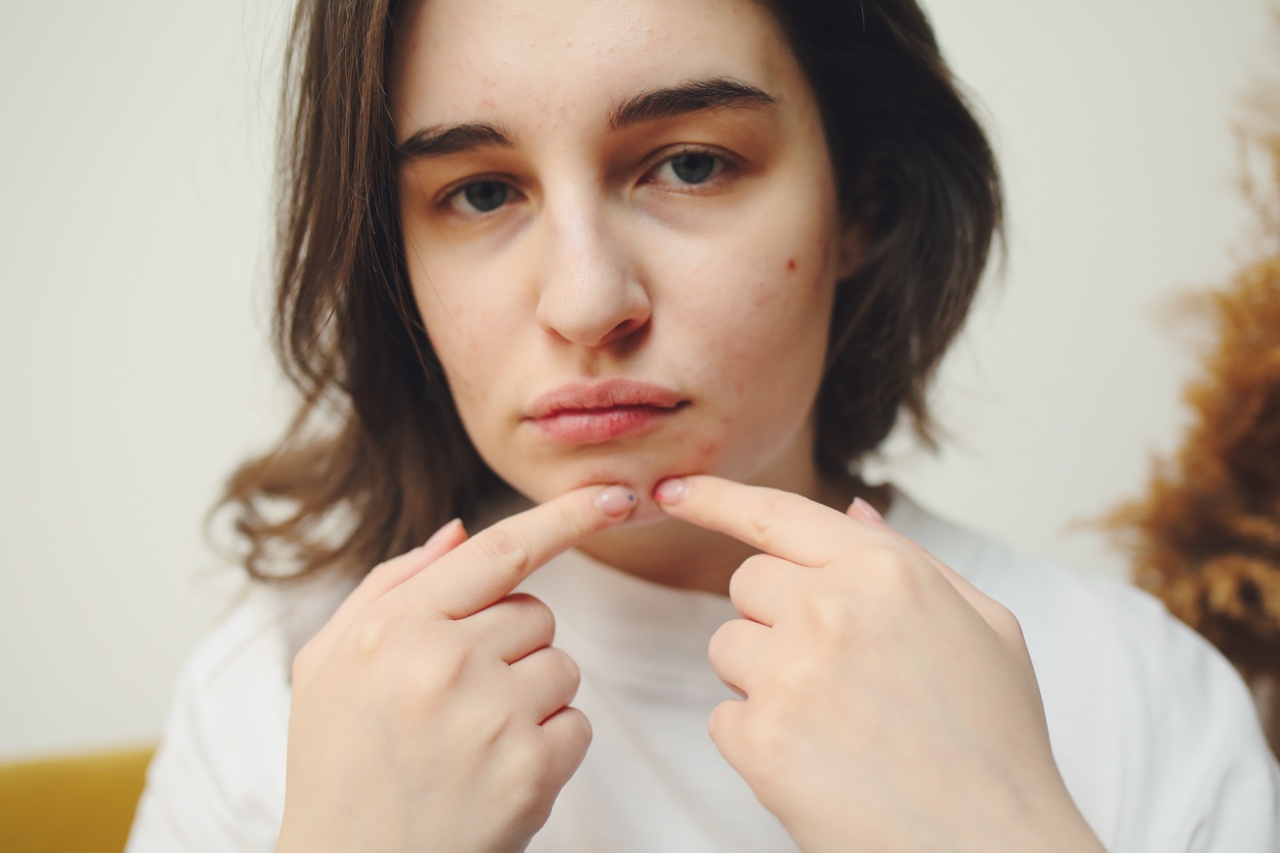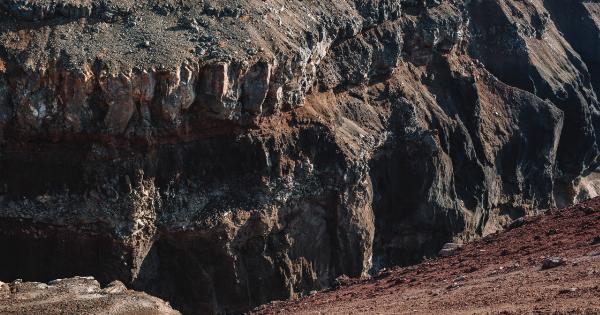If you’re an acne sufferer, you’re probably familiar with the urge to pick at or pop your pimples. However, if you have a pimple in the “danger triangle” on your face, it’s crucial that you resist the temptation to pop it.
The “danger triangle” refers to an area on your face that includes the corners of your mouth and the bridge of your nose, and popping a pimple in this area can have serious consequences. Here are 30 reasons why you should avoid popping pimples in the “danger triangle.”.
1. The “Danger Triangle” Contains Major Blood Vessels
The “danger triangle” is so called because it contains major blood vessels that drain blood from the face. If you pop a pimple in this area, bacteria from the pimple can travel into these blood vessels and cause an infection.
This can lead to serious complications, including blindness, paralysis, and even death.
2. Infection Can Spread Quickly
If you pop a pimple in the “danger triangle,” the infection can spread quickly due to the proximity of major blood vessels. This can make it difficult to treat and increase your risk of serious complications.
3. Vision Loss
If the infection spreads to the eye, it can cause vision loss or even blindness. This can occur if the bacteria from the pimple enters the ophthalmic vein, a major blood vessel that drains blood from the eye.
4. Meningitis
If the bacteria from the pimple enters the brain, it can cause meningitis, a serious and potentially life-threatening infection that affects the membrane that surrounds the brain and spinal cord.
5. Septicemia
If the infection spreads throughout the body, it can cause septicemia, a potentially life-threatening infection that affects the entire body.
6. Cellulitis
Cellulitis is a bacterial infection of the skin and soft tissue that can occur if you pop a pimple in the “danger triangle.” The infection can spread quickly and lead to serious complications, including septicemia and death.
7. Cavernous Sinus Thrombosis
Cavernous sinus thrombosis is a rare but serious complication that can occur if the infection from a pimple in the “danger triangle” spreads to the cavernous sinus, a large vein that runs behind the eye socket.
This can cause symptoms such as headache, fever, and vision changes. If left untreated, it can be fatal.
8. Cranial Nerve Palsy
If the infection from a pimple in the “danger triangle” spreads to the cranial nerves, it can cause paralysis of the facial muscles or other neurological complications.
9. Necrotizing Fasciitis
Necrotizing fasciitis, also known as flesh-eating disease, is a rare but life-threatening bacterial infection that can occur if you pop a pimple in the “danger triangle.” The infection spreads quickly and can cause significant tissue damage and organ failure.
10. Increased Risk of Scarring
Popping pimples in any area of the face can increase your risk of scarring, but this risk is even higher if you pop a pimple in the “danger triangle” due to the complexity of the blood vessels and nerves in this area.
11. Prolonged Healing Time
If you pop a pimple in the “danger triangle,” it may take longer to heal due to the slower blood flow and increased risk of infection in this area.
12. Increased Risk of Acne
Popping pimples can actually make your acne worse. When you pop a pimple, you increase the risk of spreading the bacteria that cause acne to other parts of your face, leading to more pimples.
13. Development of Nodules
When you pop a pimple, you increase the risk of developing nodules, which are large, painful bumps under the skin. These can be difficult to treat and may require surgical removal.
14. Development of Cysts
Similar to nodules, popping pimples can also lead to the development of cysts, which are large, fluid-filled bumps under the skin. These are also difficult to treat and may require surgical removal.
15. Increased Risk of Hyperpigmentation
Popping pimples can also increase your risk of hyperpigmentation, which is when the skin becomes darker in the area where the pimple was. This can be difficult to treat and may require professional help.
16. Increased Risk of Hypopigmentation
On the flip side, popping pimples can also increase your risk of hypopigmentation, which is when the skin becomes lighter in the area where the pimple was. This can also be difficult to treat and may require professional help.
17. Increased Risk of Inflammation
Popping pimples can also increase your risk of inflammation, which can cause redness, swelling, and pain. This can make your acne even more noticeable and difficult to cover up with makeup.
18. Increased Risk of Infection
Popping pimples can also increase your risk of infection, especially if you don’t clean the area properly before popping. This can lead to more pimples and other complications.
19. Increased Risk of Scarring
We’ve already mentioned that popping pimples can increase your risk of scarring, but it’s worth mentioning again.
Scarring can be especially difficult to treat in the “danger triangle” due to the complexity of the blood vessels and nerves in this area.
20. Reduced Immune Function
Popping pimples can also reduce your immune function, making it more difficult for your body to fight off infections and other illnesses.
21. Increased Risk of Allergic Reactions
If you have sensitive skin, popping pimples can increase your risk of allergic reactions, which can cause redness, itching, and other symptoms.
22. Increased Risk of Dry Skin
Popping pimples can also increase your risk of dry skin, which can exacerbate existing acne and make it more difficult to treat.
23. Increased Risk of Oily Skin
On the flip side, popping pimples can also increase your risk of oily skin, which can lead to more acne and other skin problems.
24. Irritation of the Skin
Popping pimples can also irritate the skin, causing redness, swelling, and other symptoms. This can make it even more difficult to cover up your acne with makeup.
25. Increased Risk of Inflammatory Acne
Popping pimples can also increase your risk of developing inflammatory acne, which is characterized by red, inflamed pimples that can be painful to the touch.
26. Increased Risk of Non-Inflammatory Acne
Popping pimples can also increase your risk of developing non-inflammatory acne, which is characterized by whiteheads and blackheads.
27. Increased Risk of Open Comedones
Popping pimples can also increase your risk of open comedones, which are also known as “blackheads.” These can be difficult to treat and may require professional help.
28. Increased Risk of Closed Comedones
Popping pimples can also increase your risk of closed comedones, which are also known as “whiteheads.” These can be difficult to treat and may require professional help.
29. Increased Risk of Dermatillomania
Dermatillomania, also known as “skin picking disorder,” is a condition characterized by the compulsive picking at the skin. Popping pimples can increase your risk of developing this condition, which can be difficult to treat.
30. Increased Risk of Mental Health Problems
Popping pimples can also increase your risk of mental health problems, including depression and anxiety. These conditions can be very difficult to treat and can have a significant impact on your quality of life.






























